Heavy Duty Overnight Diapers for Adults
Main Materials & Manufacturing Highlights
- SAP Weight Options: 10–14 g / 14–18 g / 18–22 g; dual core optional.
- 3D Leak Guards: Raised cuffs, elastic gathers for side-leak protection.
- Wetness Indicator: Line changes color when wet for overnight care.
- Tabs & Waist Range: Refastenable tabs; M/L/XL/XXL. Waist M 70–100 cm, L 90–130 cm, XL 110–150 cm.
- Topsheet & Backsheet: Soft non-woven; breathable PE/cloth-like film.
- Absorbent Core: Fluff pulp + SAP; channel design optional.
- Odor Control: Optional odor-lock, pH-balanced layer.
- Compliance: ISO 9001/13485; OEM/ODM & private label.
Note: Capacity varies by SAP, fit, posture, and pressure. Request a quote for customized specs.
Suitable for: Patients with mild to moderate incontinence, long-term bedridden individuals, people with limited mobility, postoperative patients, etc.
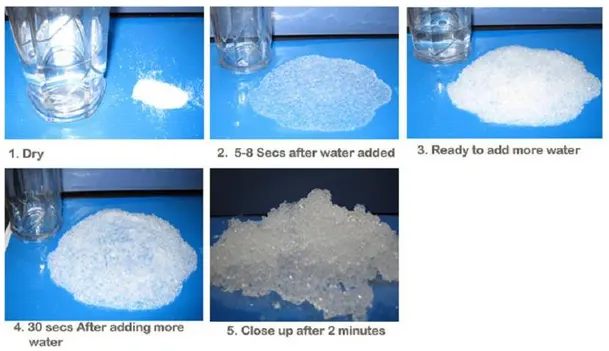
What factors influence the absorbency of adult diapers?
- The quality and loading of superabsorbent polymer (SAP) dominate: the balance of intake speed, permeability (anti-gel block), and retention/anti-rewet.
- Fluff pulp stabilizes SAP, wicks and distributes, adds short-term storage, reduces gel blocking for multiple wet.
- The core design (SAP-fluff ratio, layering, density, channels) dictates the intake speed, spread, and lock-in.
- Urine salts slash SAP uptake (0.9% NaCl ≈ 1/10 of DI water); pressure increases the risk of rewetting.
- The topsheet/ADL hydrophilicity, pore size, and basis weight control intake and rewet.
Why do adult diapers seem less “refined” than baby diapers?
- Different needs: Adults are satisfied with utility but leak-proof softness, breathability, and safety are priorities for babies.
- Materials/Formulation: For baby diapers, softness, thinner, and dry performance materials are used as well as premium SAP, but adult diapers are constructed with SAP + fluff and thicker/heavier cores, which lowers intake and breathability.
- Consumer mindset (key): Baby-category buyers prioritize quality and are less price-sensitive; adult-care buyers emphasize value/pack count, steering brands toward cost-performance over high-end specs. It’s not a tech limit—mainstream pricing and preferences lead to less investment in premium materials/processes, unlike baby diapers.

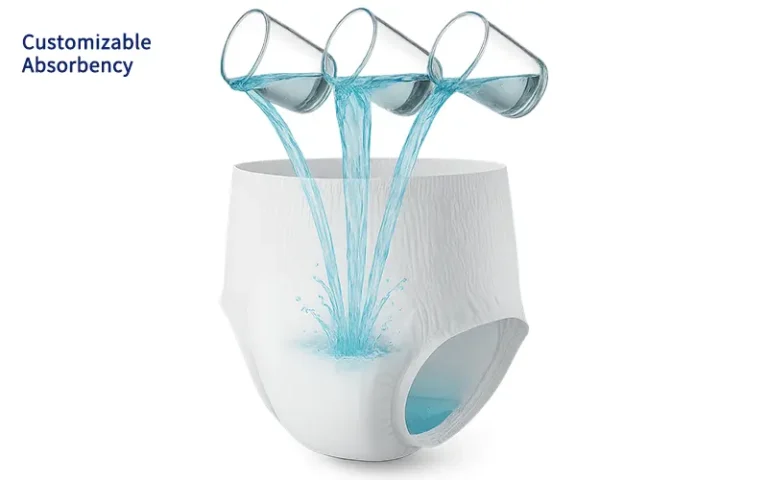
Absorbency & Change Guidance of Adult Diapers
Adult Diaper Specifications & Estimated Capacities
| Spec | Estimated Water Capacity* | Estimated Urine Capacity* |
|---|---|---|
| SAP 12 g | ≈ 2,160 mL (2.16 L) | ≈ 720 mL (0.72 L) |
| SAP 14 g | ≈ 2,520 mL (2.52 L) | ≈ 840 mL (0.84 L) |
Note: Urine capacity is typically lower than water capacity due to salt content,body pressure, posture, and real-world usage conditions.
How often should you change?
- For heavy wetters (e.g., diabetes, heart failure): Check every 4–5 hours to keep from leaks and skin problems.
- For overnight use: Choose higher SAP content (or a custom build) and snug cuffs/waist will help with real-world performance.
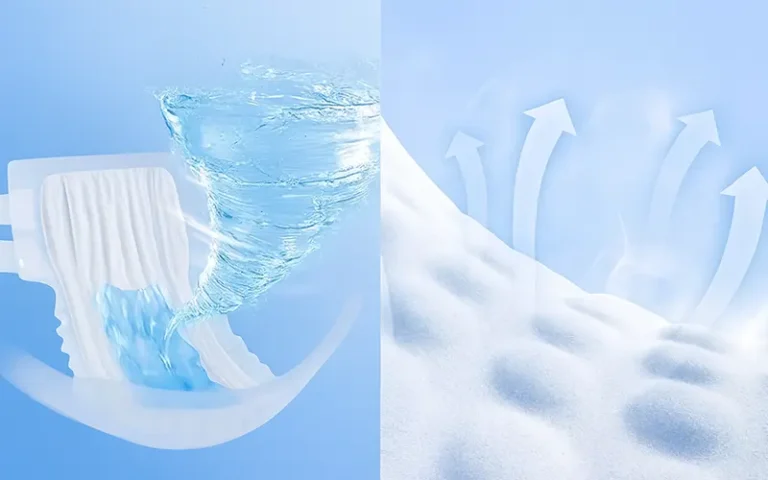
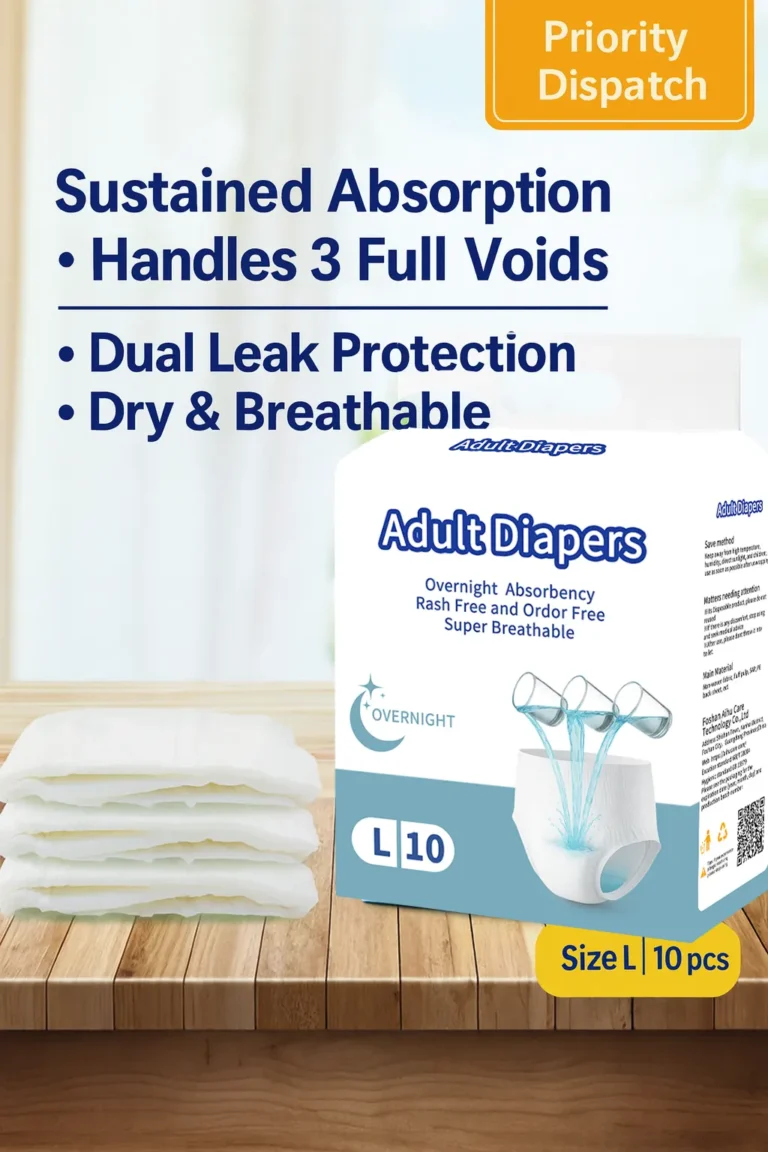
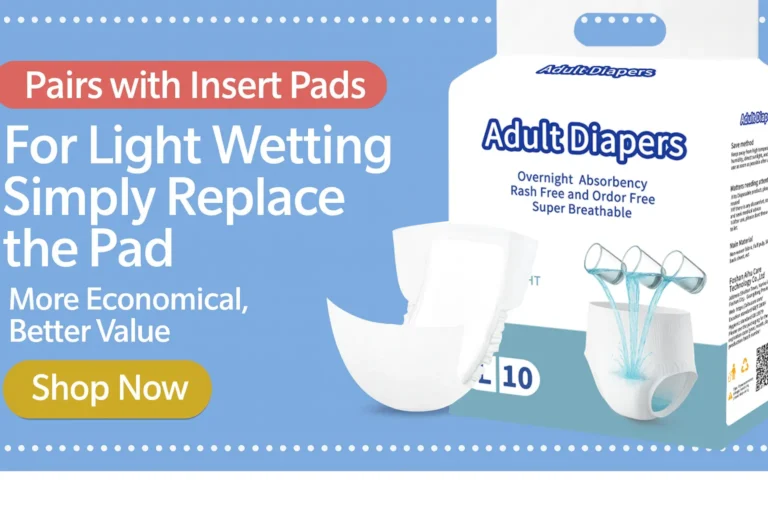
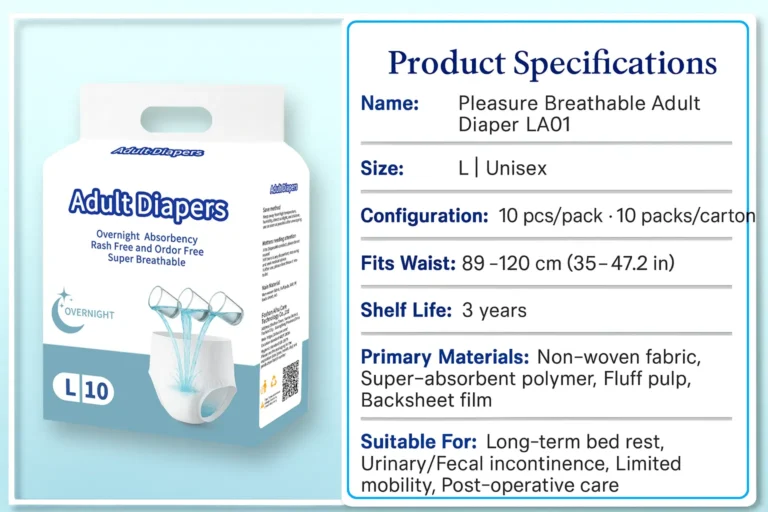
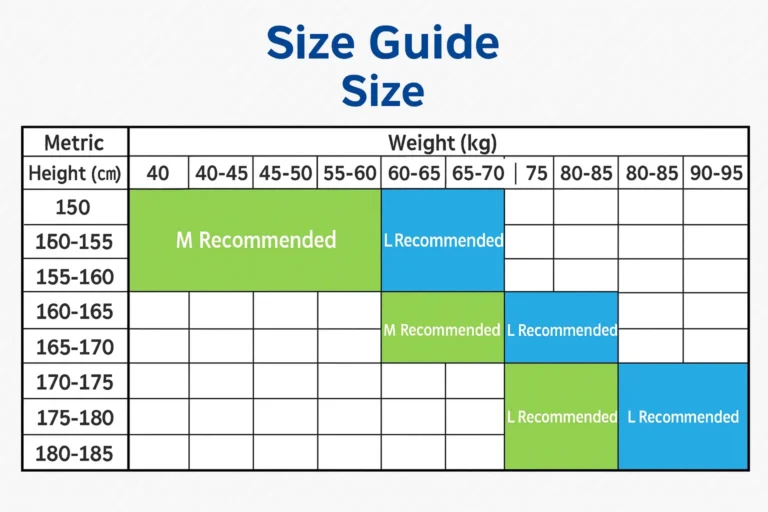
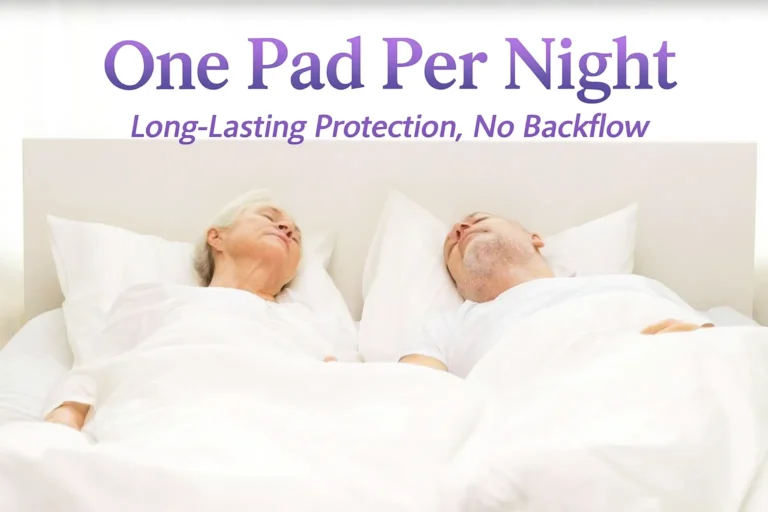
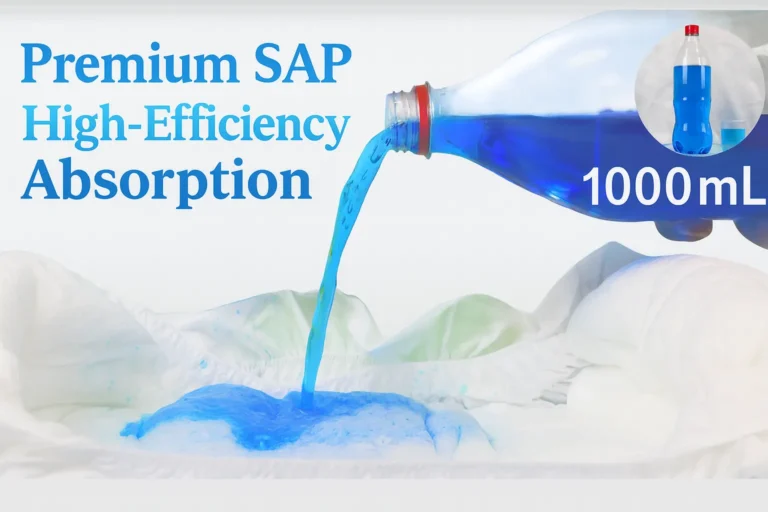
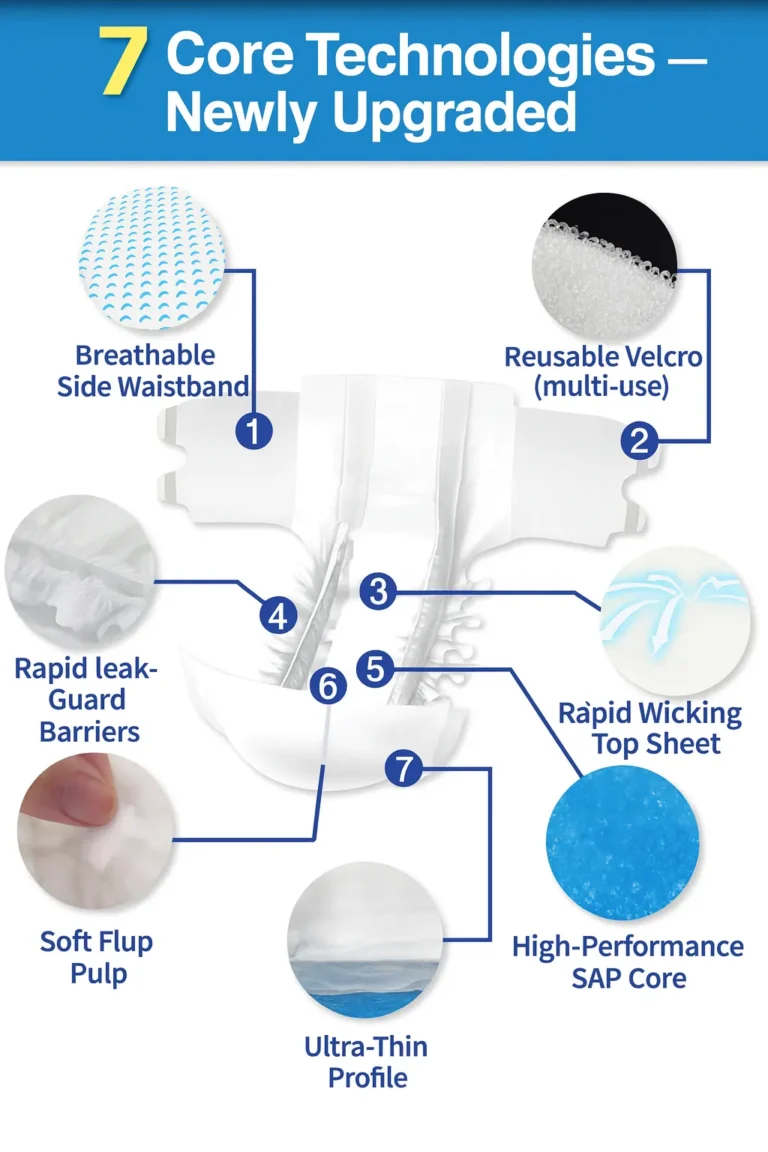
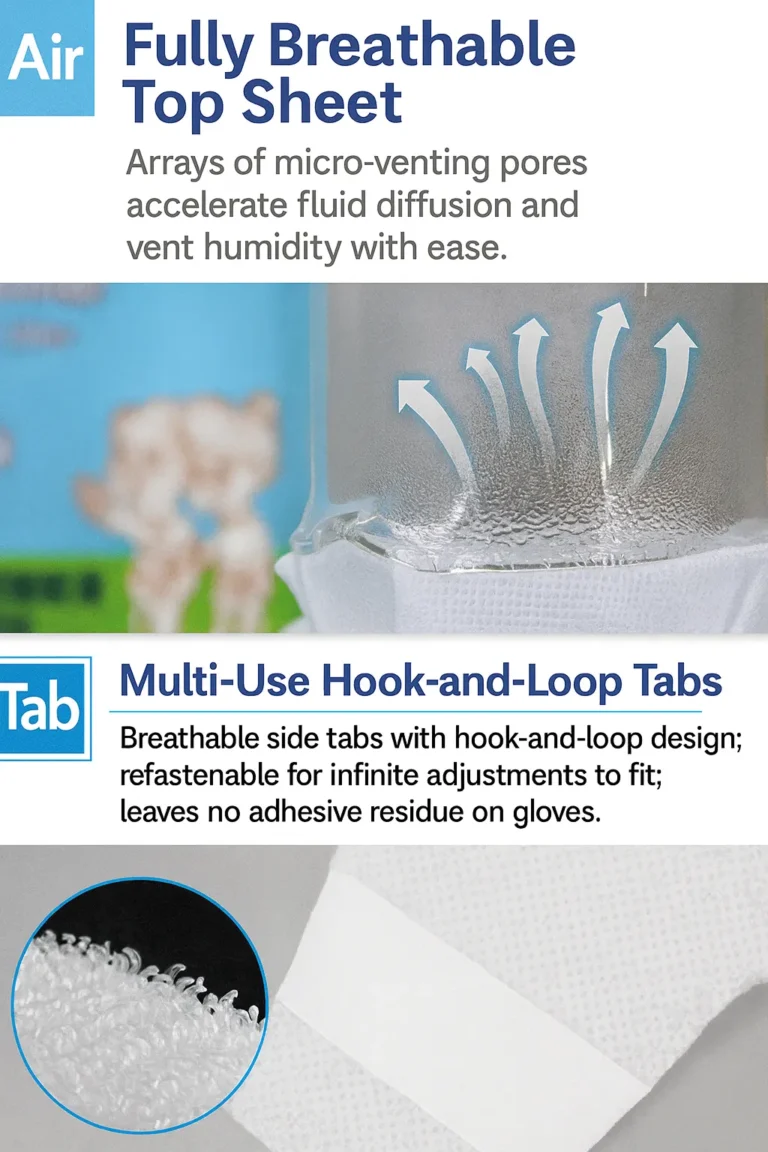
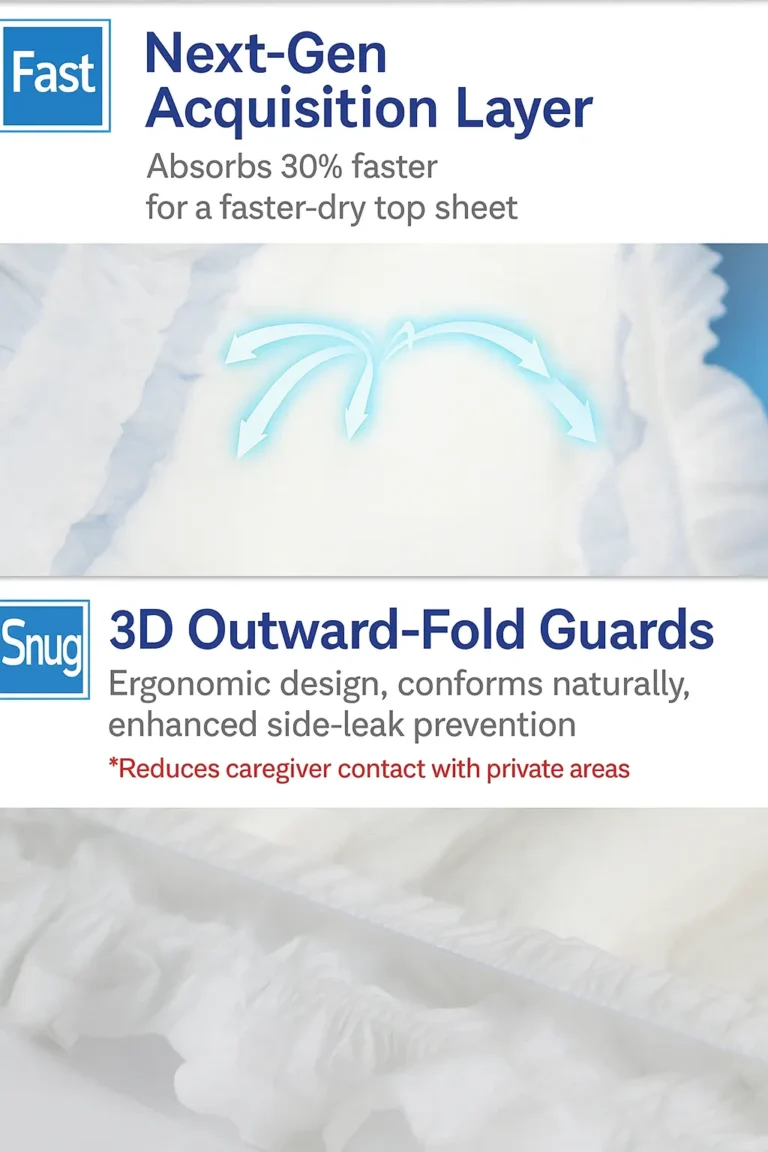
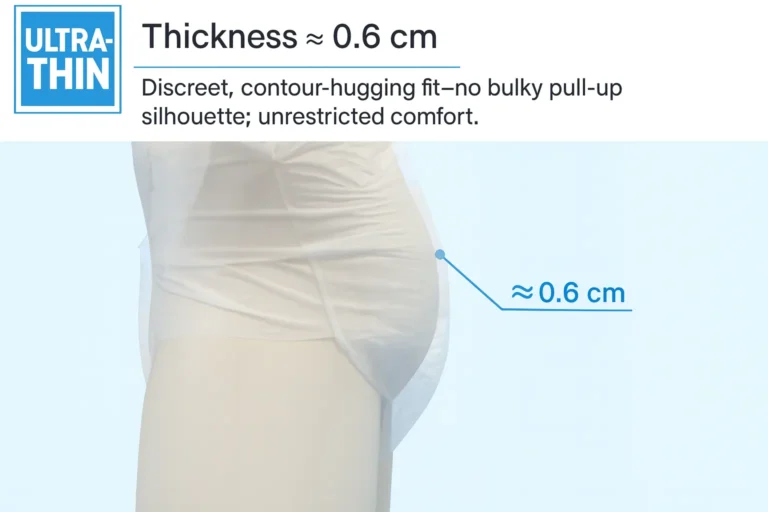
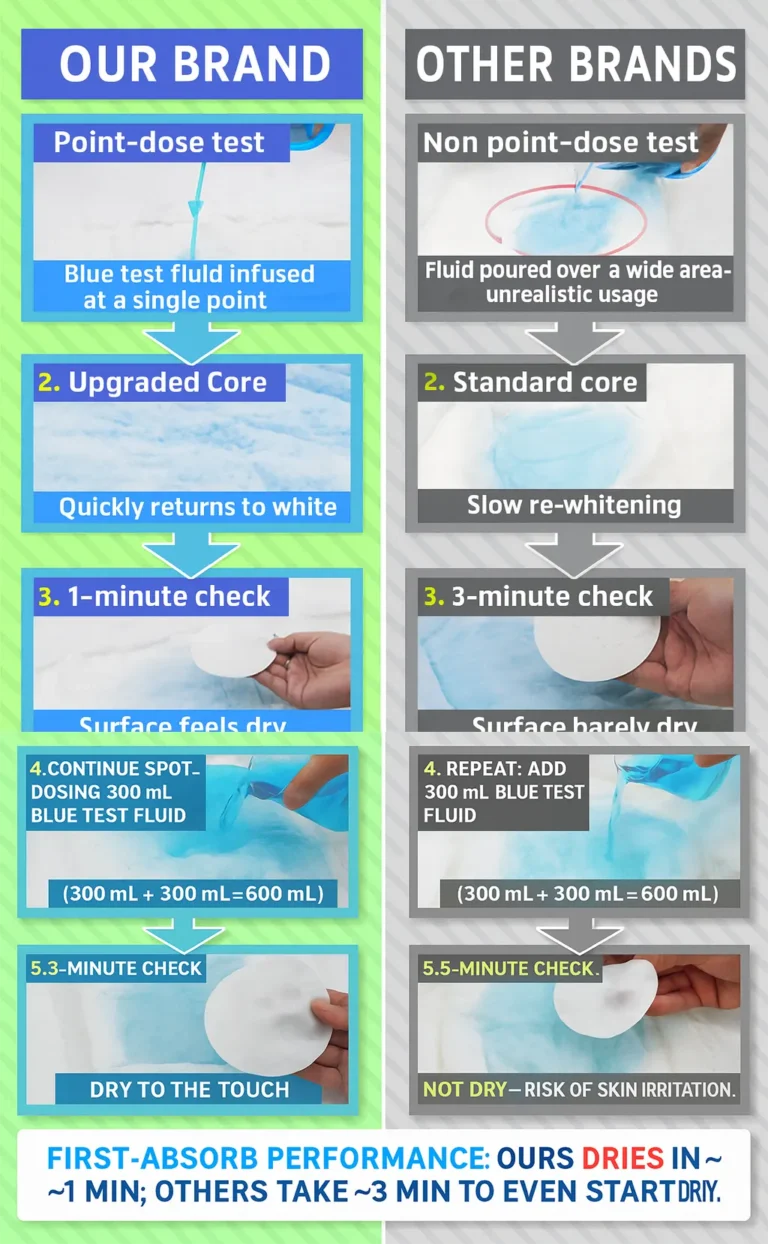
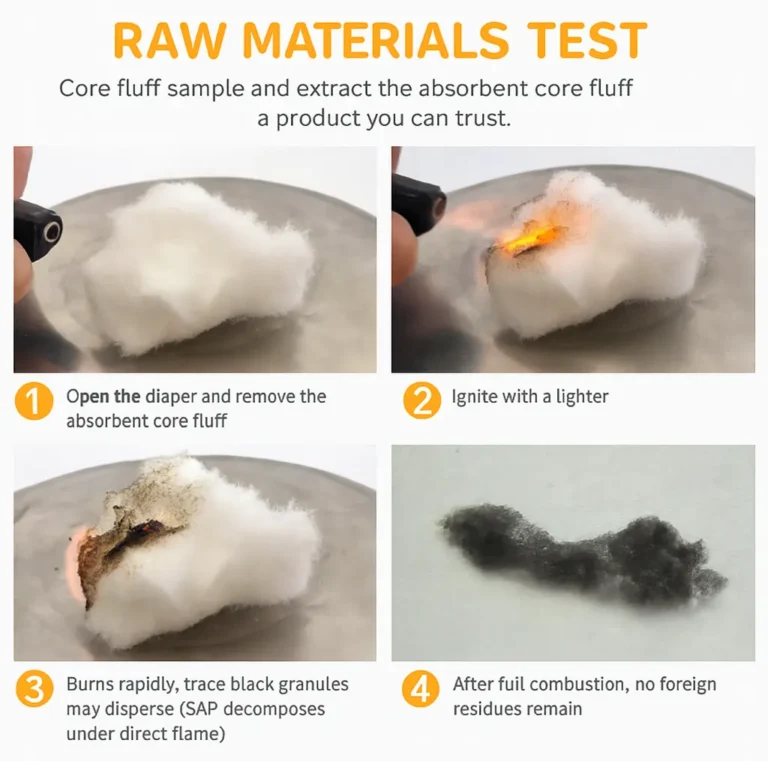
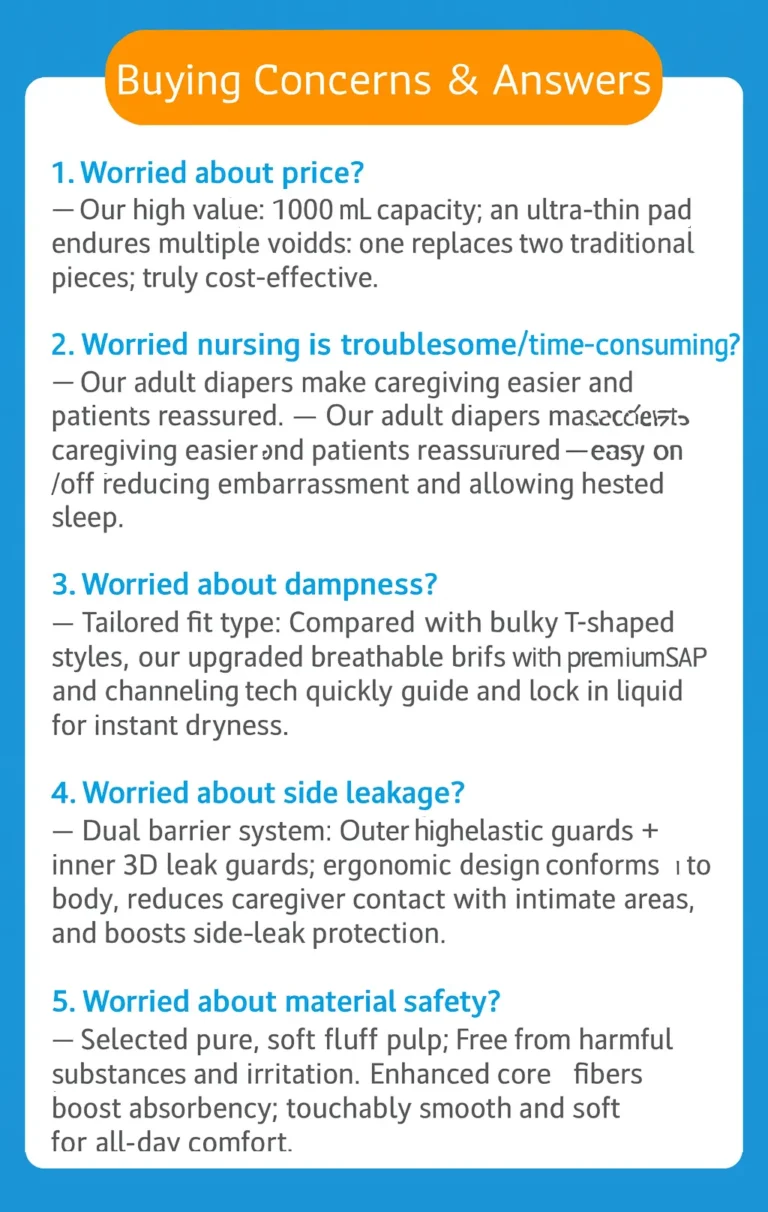
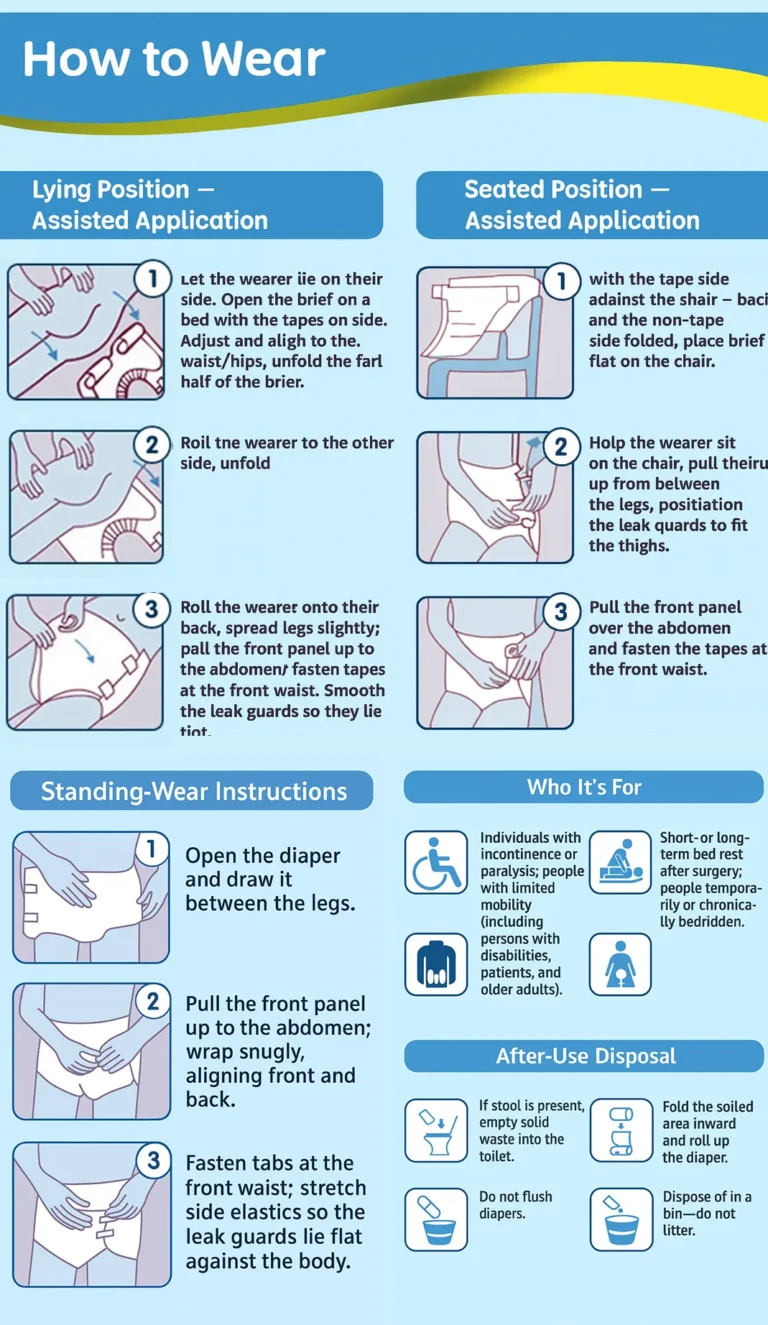
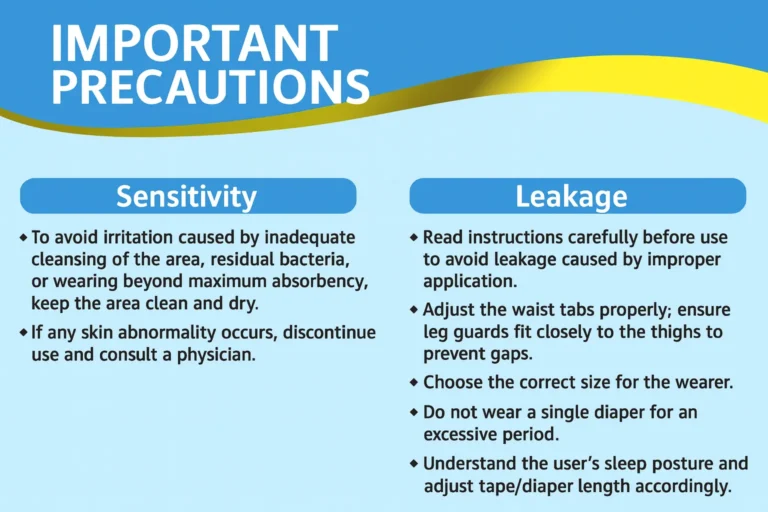
FAQ of Heavy Duty Overnight Diapers for Adults
I. Selection & Identification
Q1: Is “higher absorbency” always better?
A: Not always.
“Water absorbency” and “urine absorbency” are different: while SAP (superabsorbent polymer) will absorb pure water much more than urine, salts contained in urine will prevent SAP from absorbing water.
Any claims stating “*800-1500 mL*” are most likely to reflect saturation limit, in real use most people will change before reaching full saturation.
Q2: How can I tell if a diaper uses Sumitomo SAP from Japan?
A: It’s hard for consumers to tell.
Even if you tear it open, there’s no way to tell. Sumitomo SAP is often regarded as a premium/expensive brand and only supplied to large manufacturers.
Diapers costing adult 1-2 RMB cannot afford Sumitomo SAP.
Q3: Is “you get what you pay for” true here?
A: Generally, yes.
Buy from reputable platforms and avoid rock-bottom prices.
Price and quality are often positively correlated; pick products with reasonable pricing and consistent reviews.
Q4: If the inner layer smells strongly of fragrance, should I buy it?
A: Be cautious.
If there’s a noticeable fragrance on the inner layer, consider other options.
II. Recycled Materials
Q1: We don’t see anyone collecting used diapers. Where do “black-market” factories get them?
A: Customs has been shown seizing illegal “foreign waste” in news reports.
Used diapers may be collected in some countries, and with strict waste sorting, they may be collected and then illegally exported.
Q2: Aren’t the SAP particles in used diapers already spent? Why say there’s still SAP left in recycled fluff pulp? Can SAP be sun-dried and reused?
A: Leftover SAP can exist.
Fluff pulp can be sun-dried and reused; SAP itself cannot be sun-dried and reused.
Since many users change diapers before saturation, discarded diapers may still contain partially or non-absorbed SAP.
Q3: Wouldn’t recycled materials be filthy and smelly? How can users not notice?
A: Multiple processing steps can mask it.
Processes may include crushing, sun-drying, and chemical deodorization; without careful inspection, it can be hard to detect.
A: It’s possible to mask smell.
There are many ways to get around it, like crushing, sun-drying, and using chemicals to deodorize, and it may be hard to detect without close inspection.
Q4: Do people really use diapers that cost only very cheap per piece?
A: There are different consumption tiers.
There are reports that in some rural/township areas, people may sun-dry and reuse used diapers.
Q5: Are recycled materials harmful to health?
A: They can be.
Recycled items can contain numerous bacteria and viruses that are dangerous to older and frail users with weaker immunity.
Friendly reminders
Prioritize reliable retailers, consistent reputations, and transparent materials.
If you notice irritating odors, leaks, diaper rash, or allergies, switch brands promptly and monitor skin condition.
Request Quote Now !
Our professional experts are ready to partner with you in developing your business.
